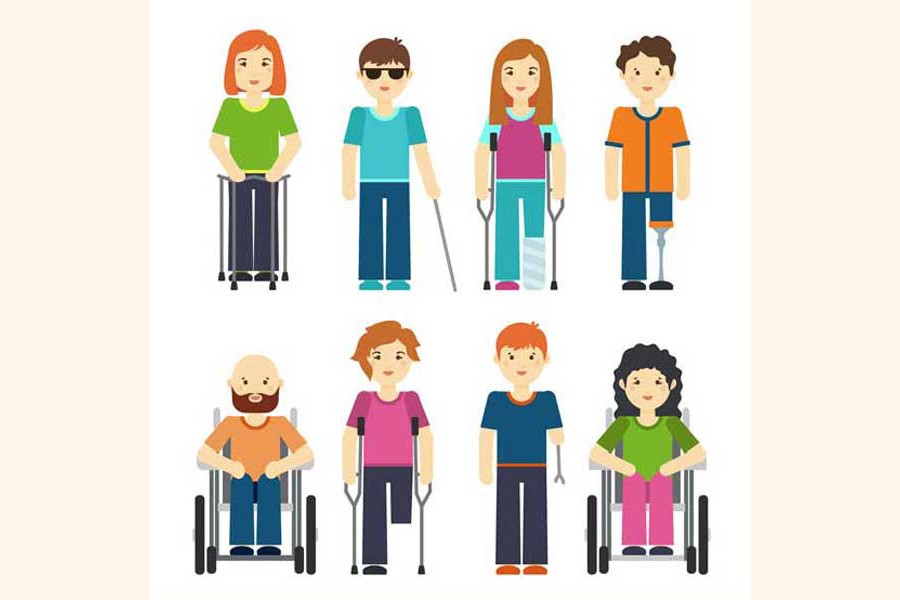THE FUTURE IS ACCESSIBLE means that we must all, together, look towards a future where the barriers which stand in people's way no longer exist. We envisage a future where people can access a building without using stairs; where a person can access a ramp to the beach; or can get a job without fear of discrimination; or can access a mainstream classroom. Working towards an accessible future is everyone's responsibility. We must create a future which demands that people are not excluded because of their health impairments. Call out barriers wherever you see them, and work with us to overcome them.
The annual observance of the International Day of Persons with Disabilities (IDPD) was proclaimed in 1992, by the United Nations General Assembly resolution 47/3. Celebrated on 3 December around the world, IDPD mobilises support for critical issues relating to the inclusion of persons with disabilities, promotes awareness-raising about disability issues and draws attention to the benefits of an inclusive and accessible society for all. Bangladesh has supported the convention on the rights of the persons with disability, abrogated the existing law and promulgated the new law 2013 in accordance with the UN charter.
More than one billion people currently experience disability, which equates to approximately 15% of the world's population. Disability disproportionately affects marginalised, disadvantaged or at-risk populations such as women, older people, and people who are poor. Children from poorer households, indigenous populations, and those in ethnic minority groups are also at a significantly higher risk of experiencing disability. Lower income countries have a higher prevalence of disability than higher income countries. There is a strong evidence for a link between disability and poverty in low and middle income countries and an urgent need for further research and policy action to break the cycle.
Bangladesh, a low resource country in south Asia, launched rehabilitation medicine services in some 50 years back but a snail's pace progress creates a sordid saga in this world's most densely populated country. The structures of primary health care delivery systems in Bangladesh have no provision of priority care for disabled and have scarcity of skilled manpower to address the disabled. In Bangladesh like many other low and middle income countries (LIMCs) there is a shortage of workers with appropriate rehabilitation skills, resulting in task-shifting practices. For rehabilitation services in many LMICs, there are challenges within operational healthcare systems in terms of policy, funding structure/infrastructure, capacity, human and physical resources, and technology.
A core set of clinical skills need to be developed for health-related community-based rehabilitation (CBR) work in LMICs. Important aspects are assessment, monitoring and reporting; behavioral and cognitive interventions; education; provision of aids, assistive devices and technologies; psychosocial support; recreational therapy; self-care; supervision; vocational rehabilitation and working with families.
CBR has improved the quality of life, access to medical services, functional independence, autonomy, community inclusion, and empowerment of people with disabilities (PWD) in LMICs in the Asia-Pacific region. However, challenges in the implementation of CBR need to be faced. These include lack of awareness and understanding of CBR, and physical, environmental, socio-economical and personal barriers.
We need to address the capacity building of rehabilitation health workforce at the community level. We should train the health workforce for clinical skills so that they can apply their knowledge to the health needs of the disabled. Some organisations are working independently on different components of CBR, but health components are inadequately addressed. Community-based approach to different components of primary health care should be integrated with community-based rehabilitation (CBR)'s structured medical care which includes optimising functions by medical treatment, therapy, assistive devices, etc. These concepts will be more financially viable than establishing separate CBR services.
Funding and planning are major hindrances to capacity building of rehabilitation health workforce. Bangladesh, a growing economy in South Asia also has rising health indexes but rehabilitation services are squeezed at the bottom of cauldron. To sustain the growing trend in health indexes, medical rehabilitation services at the community level need to be urgently implemented particularly with comprehensive approach to people at low resource outset. Community-based rehabilitation services can benefit the marginalised population and should follow the WHO-guided CBR matrix. Large number of rehabilitation health workforce needs to be recruited and trained to reduce the burden of disability in the society. Physiatrists or rehabilitation specialists must be involved in all steps of medical rehabilitation services to ensure clinical skills to service providers. Improving the quality of life of millions of disabled and bringing them into mainstreams of development in LIMCs is the crying need of time. The emerging economy of Bangladesh will flourish through the participation of millions of disabled if we can adequately address them medically and socially.
Dr. Md. Shahidur Rahman is Professor of Physical Medicine and Rehabilitation at Bangabandhu Sheikh Mujib Medical University


